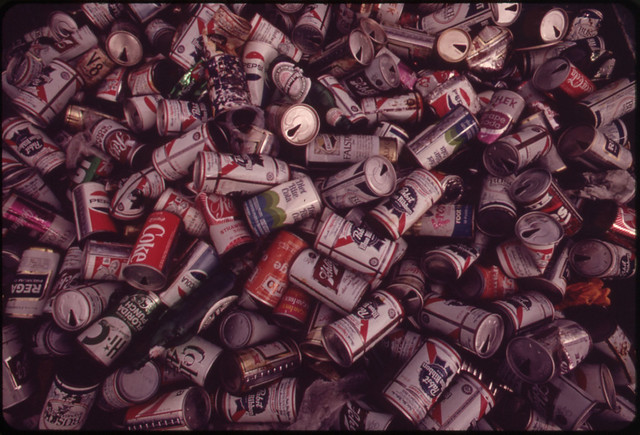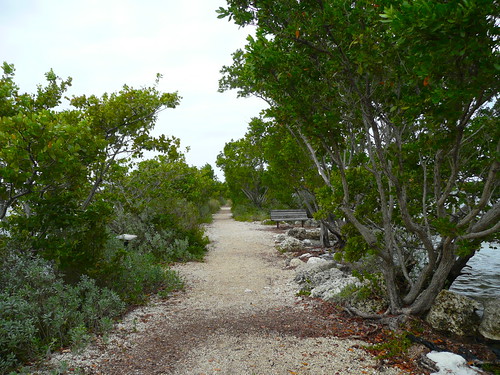I'm about to tell you something that will make a lot of you stop listening, because I will lose all credibility in your mind. I say this now because I would like to challenge you to hear me out, even if you don't agree with everything I believe in. Here it is: I don't believe in Hell. I don't believe in Heaven for that matter. As for an after-life, I think that's all about the everlasting human spirit. We teach those around us to carry forward compassion and love. We learn from others and stories of those gone before us how we should behave in a society of humans. And, some of us take words from scripture and use them to learn more about how to be our best, and carry our human spirit forward and beyond our physical being. And if I'm wrong about Heaven, that's fine. I do know that we're supposed to love everyone, even our enemy, and if there's a God that loves us that much, too, he wouldn't exclude anyone from Heaven. But for the sake of this sermon, let's see Heaven as the goodness of the human spirit, and Hell, a place we created on Earth.
Again, I'm not a big fan of Hell. I do love a good metaphor, though. After all, what is all language, but metaphor? Even the simplest words, with little room for interpretation are merely symbols that represent something. There is no "literal translation" of anything, let alone the Bible, because even the most exact interpretations still have to pass through the filter of the human mind--not only the mind of the translator, but that of every individual in his or her audience. This is where the variety of human experience blurs all "literal" interpretation . I find the metaphor of Hell to be so intriguing, with each person interpreting it in a way that tells a story of who they are. From my perspective, I'd like to suggest that it applies directly to the environment. I am, after all, an environmentalist at heart.
 |
| Dante Alighieri, 1265-1321 ad |
Now before I go on, I want to make it very clear that when I'm talking about Hell, that you put aside Dante Alighieri's version, and consider the Bible's. This Italian, Dante, wrote an epic poem called "Divine Comedy" a long time ago, and the section called "Inferno" has really impacted how people think about Hell. If YOU think about Hell as a blazing inferno where people are eternally damned, you got your version of Hell from Dante. However, a quick search the word "Hell" in the New Testament comes up with 15 references, seven of which are in Matthew, three in Mark, one in Luke, two in Acts, and one each in James and 2nd Peter. All of the New Testament references are a translation of the word Gehenna, which was an actual place that you could visit, if you were alive at the time. If you want to look it up, find yourself a Bible that provides exact translations (not interpretations of translations) of the Hebrew and Greek. Go ahead and look in your Bible. If it's a good Bible, it will have a footnote at Matthew 5: 21-23 that says the word was taken from the Greek for Gehenna. Other translations of "Hell" in the Bible were originally the words Sheol, Hades, Tartarus, and aion, but my favorite is this place, Gehenna.
 |
| The Tombs in the Valley of Hinnom (Gehenna) |
In the Hebrew Bible, the site was initially where apostate Israelites and followers of various Ba'als and Caananite gods, including Moloch, sacrificed their children by fire. They sacrificed their children by fire! Now I told you that this would be a metaphorical interpretation for an Earth Day sermon. Think about it. How are we sacrificing our children by fire in the name of false idols, today? Not even so metaphorically, but literally, burning away our progeny's future! In Gehenna, the fires burned night and day, fueled by future generations, just as our coal fired plants, our pistons fire, our guns blaze, and our incandescent bulbs light the way to a very dark future.
I am also not any kind of a fan of the God of the Old Testament who sends His wrath down to the earth when He is displeased. But in my search for material for this sermon, I came across this text in Deuteronomy, which speaks volumes to me about our destruction of our beautiful coal-bearing mountains in Appalachia and elsewhere:
"For a fire will be kindled by my wrath,
one that burns down to the realm of the dead below.
It will devour the earth and its harvests
I'm omitting much of the passage in Deuteronomy because it is from the perspective of an angry, vengeful God who I cannot fathom. But it speaks of how we were given all the good things of the earth, and we squandered it. I don't believe God is punishing us for this. I believe in the power of cause and effect, but there it is, in Deuteronomy. The foundations of the mountains have been set afire, and it makes me sick to my stomach.
So I implore you to root out those false idols that you can do without, to spare the mountains and to douse the flames of Gehenna. I don't normally give unsolicited advice, but if you've come this far and you're still listening, I might as well push the envelope! Here are a few suggestions of ways to extinguish those flames that are consuming our children. Don't buy what's cheapest because it's cheapest. Understand why it's cheap first. You can live without single-use plastics such as water and soda bottles. They aren't being recycled and they're killing our oceans and other waterways. Plastics are bad for you, too. Encourage your workplace, city, or state to go single-use plastic-free. Recycle everything you can. If you are able, dust off your bicycle, and take it for a ride. Eat low on the food chain. Every step up the food chain loses up to 90% of the energy it consumes, especially if it consumes corn. Boycott companies that are polluting, wasting resources, or using socially unjust practices. Embrace companies that are honestly trying to operate in a way that is fair to the people and the planet, like Fair Trade coffee companies. Bring your own bags to the grocery store or put your purchases directly in your car if you forgot a bag. Conserve fresh water. The majority of the world's population lives without it every day. Green up your living spaces by planting a garden, or native plants, and by evaluating your home for energy inefficiencies. Learn to live a little less comfortably, and find a new comfortable.
And most of all, love your neighbor, your enemy, the downtrodden and the earth. We can choose to live in Gehenna, and to destroy the mountains, or we can find a new way that isn't so far from what the Bible has been telling us for thousands of years.


















 Alpine ecosystems are fragile – the species are isolated much like island species, and they are adapted to the temperature, moisture and altitude. Increases in average temperature are major concern for alpine and montane species; as temperatures warm, the subalpine zone marches up the mountain, decreasing the surface area available until it is gone.
Alpine ecosystems are fragile – the species are isolated much like island species, and they are adapted to the temperature, moisture and altitude. Increases in average temperature are major concern for alpine and montane species; as temperatures warm, the subalpine zone marches up the mountain, decreasing the surface area available until it is gone.


